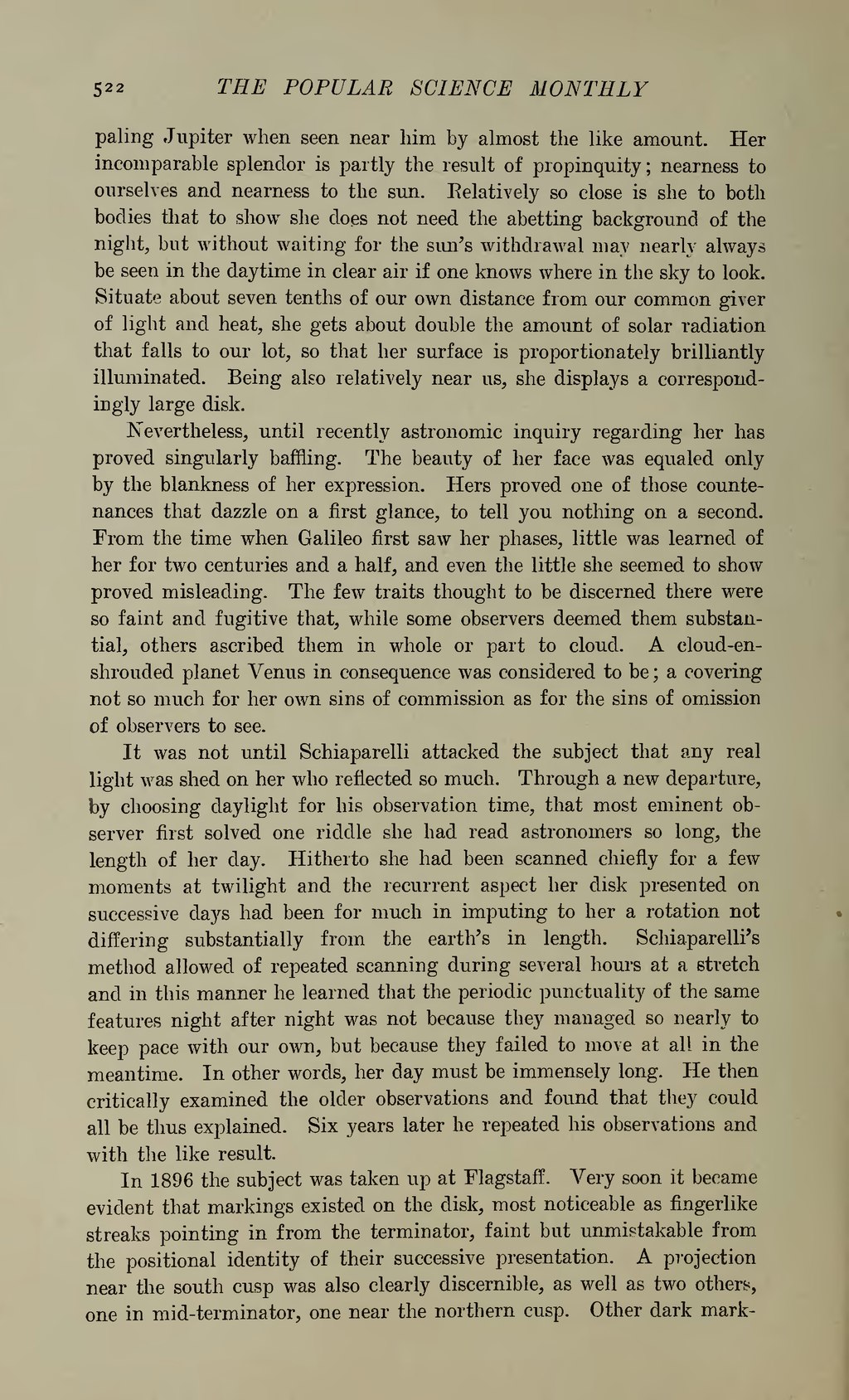paling Jupiter when seen near him by almost the like amount. Her incomparable splendor is partly the result of propinquity; nearness to ourselves and nearness to the sun. Relatively so close is she to both bodies that to show she does not need the abetting background of the night, but without waiting for the sun's withdrawal may nearly always be seen in the daytime in clear air if one knows where in the sky to look. Situate about seven tenths of our own distance from our common giver of light and heat, she gets about double the amount of solar radiation that falls to our lot, so that her surface is proportionately brilliantly illuminated. Being also relatively near us, she displays a correspondingly large disk.
Nevertheless, until recently astronomic inquiry regarding her has proved singularly baffling. The beauty of her face was equaled only by the blankness of her expression. Hers proved one of those countenances that dazzle on a first glance, to tell you nothing on a second. From the time when Galileo first saw her phases, little was learned of her for two centuries and a half, and even the little she seemed to show proved misleading. The few traits thought to be discerned there were so faint and fugitive that, while some observers deemed them substantial, others ascribed them in whole or part to cloud. A cloud-enshrouded planet Venus in consequence was considered to be; a covering not so much for her own sins of commission as for the sins of omission of observers to see.
It was not until Schiaparelli attacked the subject that any real light was shed on her who reflected so much. Through a new departure, by choosing daylight for his observation time, that most eminent observer first solved one riddle she had read astronomers so long, the length of her day. Hitherto she had been scanned chiefly for a few moments at twilight and the recurrent aspect her disk presented on successive days had been for much in imputing to her a rotation not differing substantially from the earth's in length. Schiaparelli's method allowed of repeated scanning during several hours at a stretch and in this manner he learned that the periodic punctuality of the same features night after night was not because they managed so nearly to keep pace with our own, but because they failed to move at all in the meantime. In other words, her day must be immensely long. He then critically examined the older observations and found that they could all be thus explained. Six years later he repeated his observations and with the like result.
In 1896 the subject was taken up at Flagstaff. Very soon it became evident that markings existed on the disk, most noticeable as fingerlike streaks pointing in from the terminator, faint but unmistakable from the positional identity of their successive presentation. A projection near the south cusp was also clearly discernible, as well as two others, one in mid-terminator, one near the northern cusp. Other dark mark-
